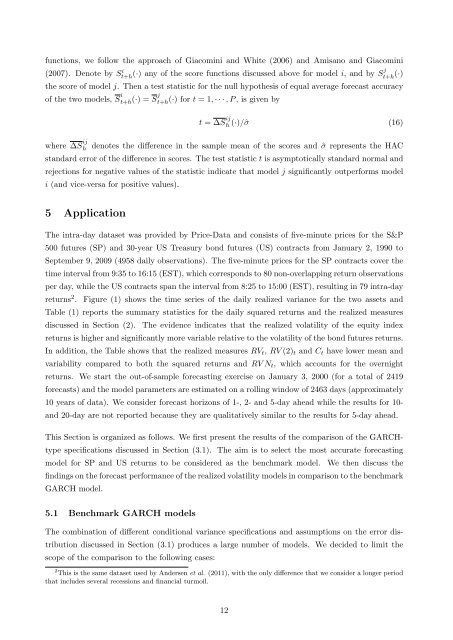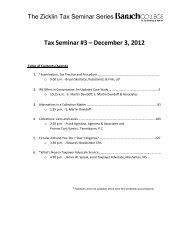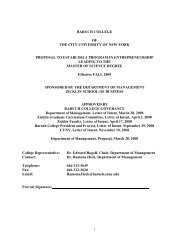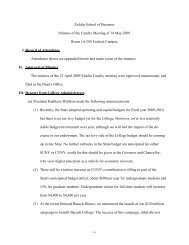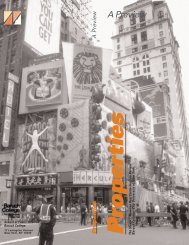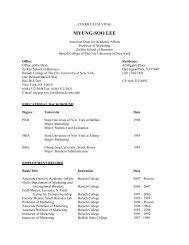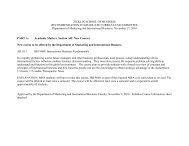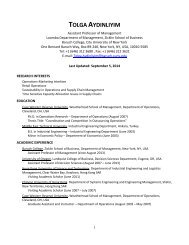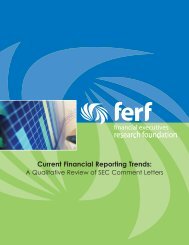Valueat-Risk
Forecasting the Return Distribution Using High-Frequency Volatility ...
Forecasting the Return Distribution Using High-Frequency Volatility ...
- No tags were found...
Create successful ePaper yourself
Turn your PDF publications into a flip-book with our unique Google optimized e-Paper software.
functions, we follow the approach of Giacomini and White (2006) and Amisano and Giacomini<br />
(2007). Denote by S i t+h (·) any of the score functions discussed above for model i, and by Sj t+h (·)<br />
the score of model j. Then a test statistic for the null hypothesis of equal average forecast accuracy<br />
of the two models, S i t+h(·) = S j t+h(·) for t = 1, · · · , P , is given by<br />
t = ∆S ij<br />
h (·)/ˆσ (16)<br />
where ∆S ij<br />
h denotes the difference in the sample mean of the scores and ˆσ represents the HAC<br />
standard error of the difference in scores. The test statistic t is asymptotically standard normal and<br />
rejections for negative values of the statistic indicate that model j significantly outperforms model<br />
i (and vice-versa for positive values).<br />
5 Application<br />
The intra-day dataset was provided by Price-Data and consists of five-minute prices for the S&P<br />
500 futures (SP) and 30-year US Treasury bond futures (US) contracts from January 2, 1990 to<br />
September 9, 2009 (4958 daily observations). The five-minute prices for the SP contracts cover the<br />
time interval from 9:35 to 16:15 (EST), which corresponds to 80 non-overlapping return observations<br />
per day, while the US contracts span the interval from 8:25 to 15:00 (EST), resulting in 79 intra-day<br />
returns 2 . Figure (1) shows the time series of the daily realized variance for the two assets and<br />
Table (1) reports the summary statistics for the daily squared returns and the realized measures<br />
discussed in Section (2). The evidence indicates that the realized volatility of the equity index<br />
returns is higher and significantly more variable relative to the volatility of the bond futures returns.<br />
In addition, the Table shows that the realized measures RV t , RV (2) t and C t have lower mean and<br />
variability compared to both the squared returns and RV N t , which accounts for the overnight<br />
returns. We start the out-of-sample forecasting exercise on January 3, 2000 (for a total of 2419<br />
forecasts) and the model parameters are estimated on a rolling window of 2463 days (approximately<br />
10 years of data). We consider forecast horizons of 1-, 2- and 5-day ahead while the results for 10-<br />
and 20-day are not reported because they are qualitatively similar to the results for 5-day ahead.<br />
This Section is organized as follows. We first present the results of the comparison of the GARCHtype<br />
specifications discussed in Section (3.1). The aim is to select the most accurate forecasting<br />
model for SP and US returns to be considered as the benchmark model. We then discuss the<br />
findings on the forecast performance of the realized volatility models in comparison to the benchmark<br />
GARCH model.<br />
5.1 Benchmark GARCH models<br />
The combination of different conditional variance specifications and assumptions on the error distribution<br />
discussed in Section (3.1) produces a large number of models. We decided to limit the<br />
scope of the comparison to the following cases:<br />
2 This is the same dataset used by Andersen et al. (2011), with the only difference that we consider a longer period<br />
that includes several recessions and financial turmoil.<br />
12


